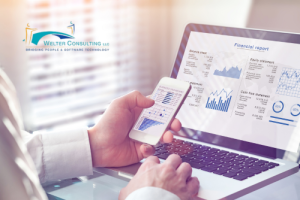Perhaps your organization has outgrown spreadsheets or off-the-shelf small business accounting software. Now, it’s time to find government fund accounting or nonprofit fund accounting software. The platform of your dreams has all the bells and whistles you’ve hoped for: great budgeting features, invoicing and automation, and super reports.
As you prepare for the implementation of your new accounting solution, there are several steps you can take to prepare your data and your team for the transition to the new platform. With these steps, you’re more likely to have a successful transition to your brand-new accounting software.
Clean Your Data
The data that’s currently in your system, whether you’re using spreadsheets or a small business accounting program, will move into the new system to get it started. If there are mistakes or errors in your current system, now is the time to correct them.
Cleaning data refers to the process of identifying and correcting errors, inconsistencies, and inaccuracies in a dataset to ensure its accuracy, completeness, and reliability for analysis or other purposes. This process involves several steps, including identifying errors, handling missing data, removing duplicates, and standardizing data. Additional steps may be resolving inconsistencies and developing what is called a “data dictionary” or a standard guide to data inputs.
Consider your donations for the past year, for example. Perhaps you input donor names and addresses into a database, spreadsheet, or your old business accounting program, and now you want to move it into your new accounting database. Checking to make sure there are no duplicates is a smart idea. Duplicates may not be exact matches, so you may need to work with your team to generate lists and manually check them. (For very large data files, there are companies that specialize in data cleanup.) Common places where duplicates creep into files include:
- Addresses where road, street, or avenue are spelled out—and a second address where it is abbreviated. You’ll need to decide what the standard for your organization will be—the postal abbreviation or spelling out the full word.
- Names where a first initial is used (J. Smith), fully spelled out (John Smith), or includes a middle initial (John A. Smith). You’ll have to decide which John Smith version to keep.
These are just two examples of some very common areas where duplicate records can occur. Other places to clean up before exporting your data to move it into the new system include reconciling bank accounts and credit cards, updating A/P and A/R, and ensuring other financial information is updated and accurate.
Document Procedures and Workflows
The accounting and finance team should document common processes, procedures, and workflows. This is important because your new accounting platform may include ways to automate steps in the workflow. It is also a good time to dust off any procedures you have already written out and update them if necessary.
Some examples include:
Donation Processing Workflow
- Receiving donations via various channels (online, mail, in-person).
- Recording donor information and donation details.
- Issuing donation receipts or acknowledgments.
- Allocating donations to specific programs or funds (if applicable).
- Reconciling donation records with bank deposits.
Program Expense Allocation Workflow
- Allocating expenses to specific programs or projects.
- Tracking program-related expenses separately from administrative and fundraising expenses.
- Ensuring expenses are allocated in accordance with donor restrictions (if any).
- Reporting on program expenses to stakeholders, including donors and grantors.
Other common nonprofit workflows include grant fund management, compliance reports, and general financial reporting.
By documenting frequently used workflows on paper, you’ll be in a much better position to understand how the same process works in your new accounting platform. Working with your software vendor or consultant, you can set up the workflows, ensure the reports you need are ready, and be better prepared for the new software.
Work with a Skilled Nonprofit Accounting Consultant When Installing New Accounting Software
It’s vital to get your new accounting software set up, and the data moved into it correctly. This is an area where having a skilled and experienced nonprofit accounting software consultant is vital. With the right consultant by your side, the transition to your new platform will be smoother and easier. You’ll be up and running in no time, with the right automations in place for maximum efficiency so you can better manage margin to support your mission.
Welter Consulting
Welter Consulting bridges people and technology together for effective solutions for nonprofit organizations. We offer software and services that can help you with your accounting needs. Please contact us for more information.






Recent Comments